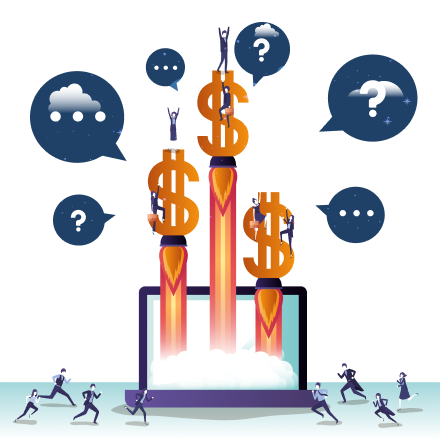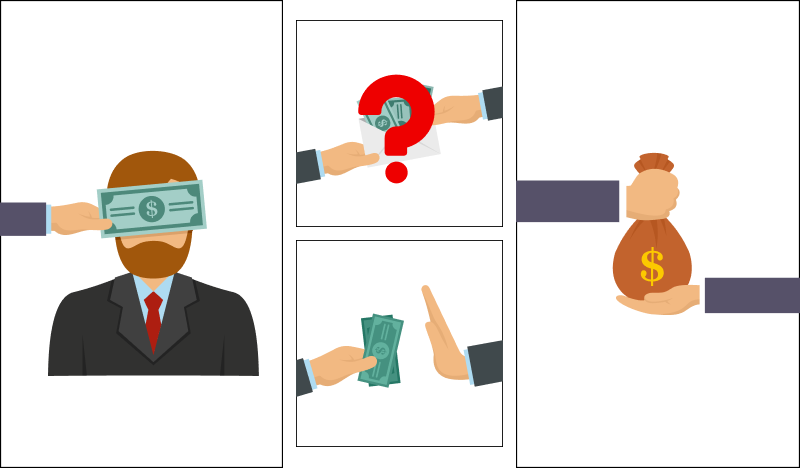What Is A Dividend?

In this article, we cover the basics you need to know about dividends and elaborate on the types of companies that pay them — or don’t pay them.
A dividend is a payment that a company distributes to its shareholders from its profits, as a reward for their investment. While dividends can be an excellent way to receive regular investment income, your decision to invest in a company should not hinge solely on the existence of a dividend.
Generally, well-established companies pay dividends because they do not want or need to retain all of their profits to fuel future growth and ensure stability. In fact, some investors consider dividends a warning sign that a company is transitioning out of its robust growth phase.
When Do Companies Pay Dividends?
By and large, companies pay dividends quarterly, but you can conceptualize dividends in terms of annual payouts. For example, a company that pays a $0.25 quarterly dividend pays an $1.00 annual dividend ($0.25 X 4).
Dividend Payment Examples

For example, Apple (AAPL) pays its quarterly dividends in February, May, August and November. Walmart (WMT) uses a January, April, June, September schedule. You can create a portfolio of stocks with staggered schedules that will produce dividend income every month of the year.
Less commonly, some companies pay dividends monthly. Realty Income (O) is the most well-known company on this schedule. The self-proclaimed Monthly Dividend Company, Realty Income has paid a dividend every month for 633 consecutive months (as of April 2023).
Even less common are companies that occasionally pay special, one-time dividends. Usually much larger than a company’s regular dividend, one-time dividends tend to result from a period of strong profitability or excess cash on the balance sheet.
Costco (COST) is well-known for issuing one-time dividends, having done so in 2012, 2015, 2017 and 2020.
Dividends: How They Work
Typically, you’ll receive dividends as cash payments to your brokerage account. Using the $0.25 example, each quarter you’ll receive $0.25 for each share of stock you own. If you own 100 shares, you’ll receive $25 a quarter.
Assuming the dividend remains constant throughout the year and setting other factors such as reinvestment aside, you’ll receive four $25 dividend payments for an annual total of $100 on your 100-share position.
You have a choice with dividend payments. When you purchase a dividend stock, your brokerage should ask you if you’d like to reinvest dividends.
If you choose this option, your broker uses each dividend payment to purchase new shares of the stock. This is a key component of a style of investing known as dividend growth investing.
You also have the option of not reinvesting your dividend payments and keeping them as a cash balance in your brokerage account or transferring them to an external account, such as another brokerage account or a checking or savings account.
Dividends: Important Dates To Know
To ensure you are entitled to receive a dividend, there are key dates you should know before you buy a stock. Additionally, these dates help you anticipate when you will receive additional dividends in your account.
Declaration Date. This is the date a company officially announces its next dividend payment.
Record Date. You must own shares on or before this date to receive the dividend payment.
Ex-Dividend Date. This date usually comes one business day before the record date. If you buy a stock on or after the ex-dividend date, you will not receive the subsequent dividend payment.
Note the distinction between record date and ex-dividend date by minding the distinction between owning and buying shares. When you buy a stock, you don’t technically own it right away.
This is because the trade must settle before you take ownership of the stock. On the record date, a company assembles a list of all shareholders entitled to receive the next dividend.
Payment Date. This is the date the company actually makes the dividend payment to shareholders. It is typically around a month after the record date.
To illustrate these dates, see this recent quarterly dividend announcement from Microsoft (MSFT):
REDMOND, Wash. — Nov. 29, 2022 — Microsoft Corp. on Tuesday announced that its board of directors declared a quarterly dividend of $0.68 per share. The dividend is payable March 9, 2023, to shareholders of record on Feb. 16, 2023. The ex-dividend date will be Feb. 15, 2023.
Microsoft declared its dividend on November 29, 2022. It made the payment of this dividend on March 9, 2023, to shareholders of record on February 16, 2023. To receive the dividend, you would have needed to buy your share prior to February 15, 2023.
To Pay Or Not To Pay A Dividend

Tesla (TSLA) generated net income of $12.6 billion during 2022, including $3.7 billion in Q4/2022. On a full-year basis, Tesla has been profitable since 2020. However, Tesla does not pay a dividend.
Oftentimes, when a company is in hyper-growth mode, it chooses to not pay a dividend. Instead, it reinvests a majority of its profits back into its business. Ideally, a surging stock price more than makes up for the lack of a dividend. This has certainly been the case with Tesla.
While TSLA stock struggled for much of 2022, it has returned roughly 825% over the last five years and more than 14,000% since going public, as of April 2023.
There comes a time in a company’s life when it makes sense to start paying a regular dividend.
An example would be Apple. In 2012, after a 17-year hiatus, it started paying a regular cash dividend. It has made a payout every quarter since then.
Prior to the official announcement, rumors swirled that Apple was about to pay a dividend. Some investors worried if this was the end of revenue growth at the company, but in fact, Apple grew revenue by roughly 152% between 2012 and 2022.
At the time of the announcement, Apple CEO Tim Cook summed up the thought process growth companies often go through when deciding to pay a dividend:
We have used some of our cash to make great investments in our business through increased research and development, acquisitions, new retail store openings, strategic prepayments and capital expenditures in our supply chain, and building out our infrastructure. You’ll see more of all of these in the future […]
Even with these investments, we can maintain a war chest for strategic opportunities and have plenty of cash to run our business. So we are going to initiate a dividend and share repurchase program.
Apple is well-known for being a cash-rich company. This allowed it to comfortably tap its “war chest” to maintain meaningful growth and enhance shareholder returns.
Multiple factors, specific to each company, determine when and if it will initiate a dividend.
In tech and other high-growth spaces, it’s less common to see dividends. The decision to pay one tends to come after a long track record of hyper growth, consistent profitability and a strong cash position.
In less “sexy” sectors where growth rates tend to be not as prolific, you’re more likely to see dividend payments. For example, utilities, consumer staples and telecommunications.
Are All Dividend Stocks Good Investments?
Short answer: No. It depends.
When you evaluate a dividend stock, you must take into account price performance.
If a company’s stock sells for $100 today and $50 a year from now, receiving a $2.00 annual dividend payment doesn’t offset the realized or unrealized loss of your principal investment.
That’s just basic math. Before you buy a stock because of the dividend, consider the relationship between stock price appreciation and the income you will receive from an investment.
Other, more complicated elements of dividend investing also matter, such as:
- Payout ratio;
- Dividend yield; and
- Your specific needs as an individual investor.
FAQs
Do I have to pay taxes on dividends?
The answer to this depends on how much money you make, the type of dividends you receive, and the type of account you own your dividend stocks in (i.e., regular versus retirement account).
We cover this in-depth elsewhere. But, as of the 2022 tax year, the qualified dividend tax rate is 15% for singles earning between $41,676 and $459,750 and married couples (who file jointly) making between $83,251 and $517,200.
How do I report dividends on my taxes?
Your brokerage will send you IRS Form 1099-DIV. Give each 1099-DIV you receive to your tax preparer so they can include the information on your tax return. If you use tax preparation software, the platform will ask you if you received investment income, such as dividends, and guide you from there.
What if I sell a stock on its ex-dividend date?
In most cases, if you sell a stock on the ex-dividend date, you remain entitled to receive the subsequent dividend payment.
Where can I look up a company’s dividend payment history?
While many great resources exist to access this information, the most accurate source of a company’s dividend history and future dividend plans is the investor relations page of the company’s website. A simple Google search with “company name dividend history” usually generates this page within the first few results.
Are dividends the same as capital gains?
No. Capital gains represent the difference between your purchase and sale price of a stock. If you bought one share of a stock for $50 and sold it for $100, you realized a capital gain of $50, before taxes.
Conclusion
Companies often return a portion of their profits to shareholders via dividend payments. A company’s stage of growth, cash position, overall financial health and future outlook generally dictates whether or not it will pay a dividend. Dividends can generate consistent income for your portfolio to reinvest in more shares of stock or take as cash.

